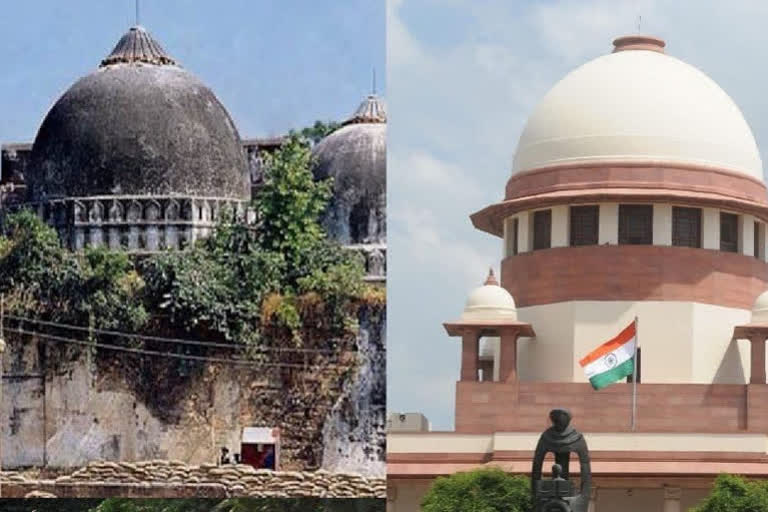Hyderabad: Ayodhya land dispute, which is synonymous with religious beliefs from millenniums, alleged destruction centuries ago and decades-long legal disputes are about to be resolved in Supreme Court.
After 40 days long investigation, the declaration by the Supreme bench that the final verdict will be out in a month’s time is giving new hopes to many. The three-member mediation panel submitted its report and the UP Sunni Waqf Board surrendered its claim on the disputed site.
These developments are hinting at an amicable conclusion. Though Justice Deepak Mishra specified that the Supreme Court’s intervention is not needed in Ayodhya case, his successor, Ranjan Gogoi has appointed a five-member bench in January to look into the case.
The court got tomes of key documents in several languages like Urdu, Hindi, Gurumukhi, Arabic, Sanskrit and Persian translated. The court reserved its judgement in 14 appeals filed against the judgement given by Allahabad High Court in 2010.
Retired justice FM Ibrahim Kalifulla, Sri Sri Ravi Shankar and senior advocate Sriram Panchu, who comprise the three-member panel are trying to work towards a resolution to bridge differences. The entire nation is anxiously waiting for the final verdict.
The Ayodhya massacre is notorious for dissolving the secular and tolerant spirit of India. In the aftermath of Babri demolition by karsevaks, the response of the then PV Narasimha Rao government was a mere eyewash.
In 1993, the PV government gave a single-line statement of the whole incident which read “Was there any temple prior to the demolition of Babri Masjid on 6th December 1992?”
Certain political sections chose not to abide by the court’s verdict under the guise of section 143 of the Indian Constitution. Since the President’s report is irrelevant according to the central government, the SC dismissed such reports.
As the majority of judges rejected pending cases under tribunals for land rights, there was a movement in the petitions. In 2010, the Allahabad High Court made a shocking judgement that none of the disputing parties could show proper evidence to prove their rightful ownership of the land.
It ordered for partitioning the 1500-yard land into three equal parts and distribute one each to Hindus, Nirmohi Akhara and Sunni Waqf Board. The filed appeals against this judgement are still pending.
The questions posed by the Supreme Court illustrate the seriousness of the Ayodhya issue. When senior advocate Parasaran argued that Babar made a mistake by constructing a Masjid in the land of Ram Janmabhoomi, the SC replied that it is not our responsibility to correct historical mistakes.
It further added that if one starts nitpicking historical errors, even Ashoka must be blamed for his deeds. While the Muslim Personal Law Board is arguing that it is impossible to reach a conclusion with the three-member board, an organization called Indian Muslim for Peace wants to gift the land to Hindus even if the judgement comes in favour of Muslims.
In 1994, the SC hoped that feelings of fraternity and tolerance would gradually resolve the Ayodhya dispute. Vajpayee also made a promise in the Parliament that the government would respect the court’s judgement. If all the involved parties show a similar spirit, the nation will remain peaceful.
Also, read: All you need to know about the Ayodhya Title Dispute



